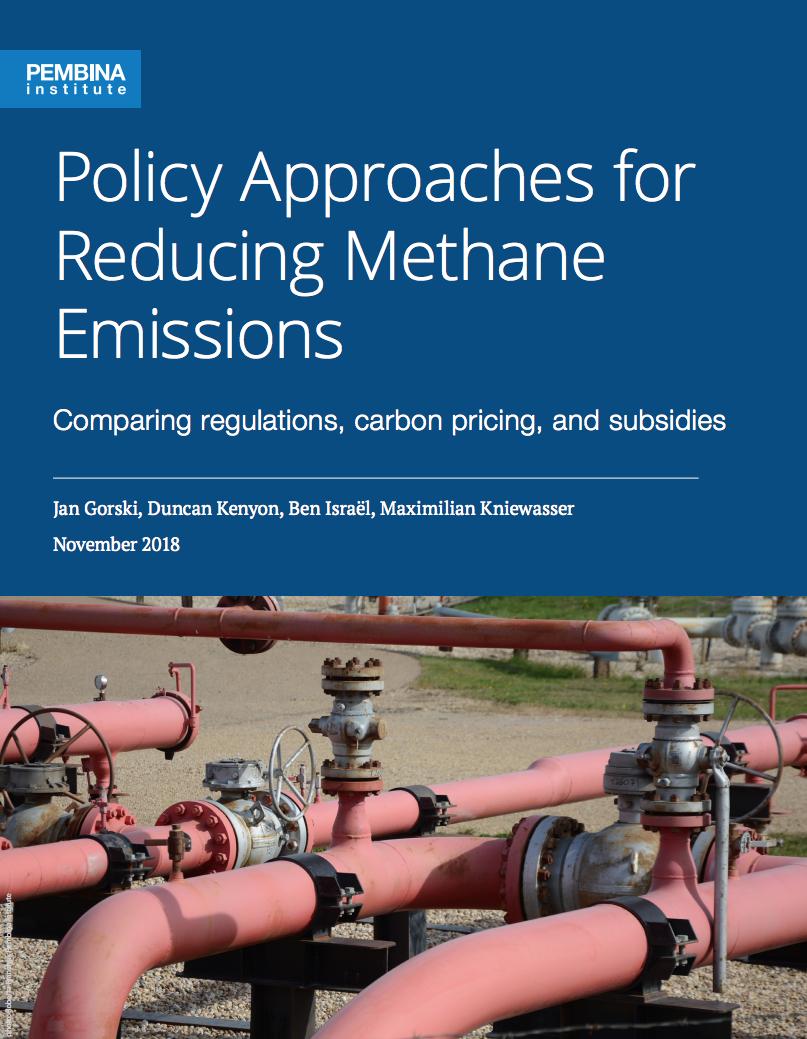Policy Approaches for Reducing Methane Emissions: Comparing regulations, carbon pricing, and subsidies is a report from Pembina Institute, co-funded by the Metcalf Foundation, which examines how to reduce methane emissions in the oil and gas sector.
Authors Jan Gorski, Duncan Kenyon, Ben Israël, and Maximilian Kniewasser begin by noting that this has become an increasingly popular way to reduce emissions of greenhouse gases (GHGs). Acknowledging that methane “can be challenging to understand” because of its many different sources, they also point out that it is almost 100 times as potent a greenhouse gas as carbon dioxide. The good news, however, is that methane stays in the atmosphere for less than a decade and can be managed both effectively and inexpensively, “making it one of the most cost-effective ways to address climate change.” Moreover, reducing methane emissions will have an immediate positive impact.
The report states that methane emission reduction “has become a hot topic in recent years” and that many jurisdictions have taken action. The Canadian government finalized their methane regulations, and Alberta and British Columbia have released draft regulations. South of the border, U.S. states such as California, Colorado, and Wyoming have regulations in place, and Mexico released regulations on methane in 2018.
Nonetheless, the report’s authors step back to ask whether regulation is in fact the best way to reduce methane emissions. The body of the report compares three policy approaches to addressing methane: regulations, pricing, and subsidies. After thorough analysis, the authors ultimately argue for a combination of all three approaches.
To achieve the greatest reductions immediately, the study recommends the five following steps:
- Implement methane regulations now.
- Improve measurement, monitoring, and reporting.
- Implement effective compliance and enforcement regimes.
- Invest in developing better measurement and monitoring.
- Put a price on methane emissions.


